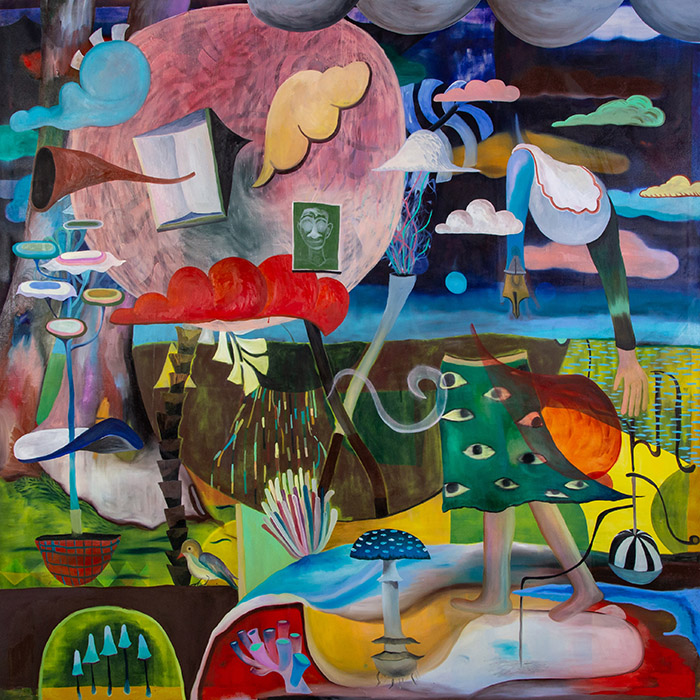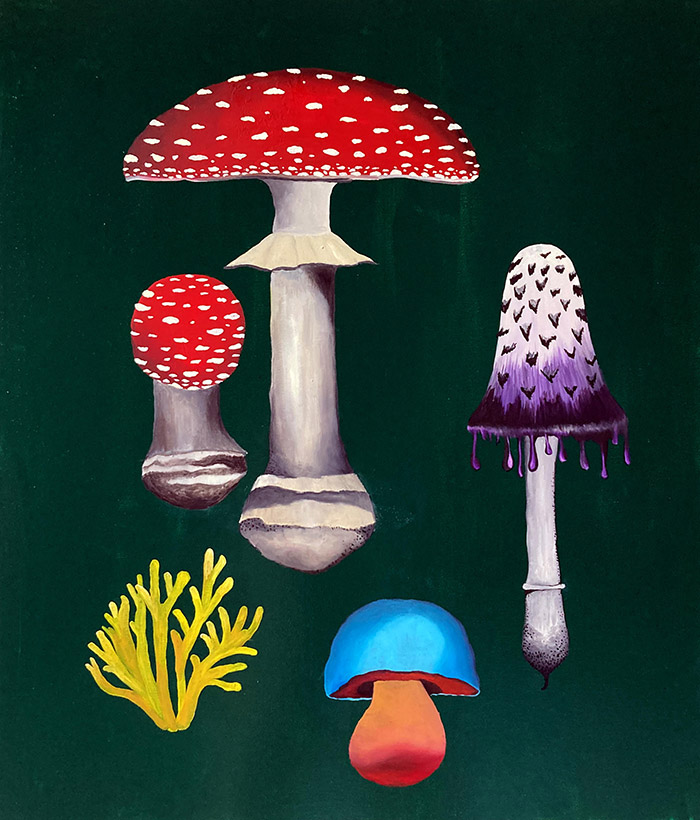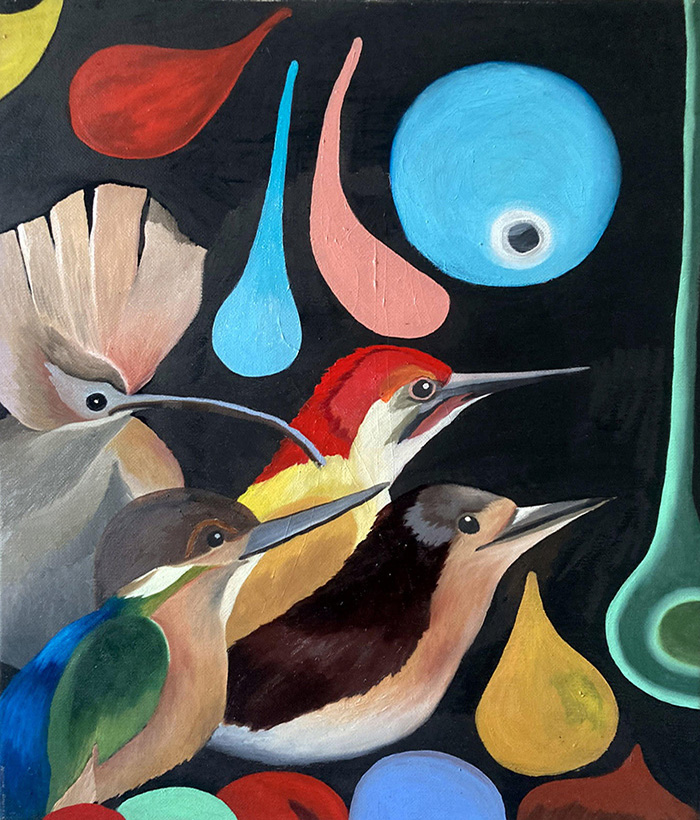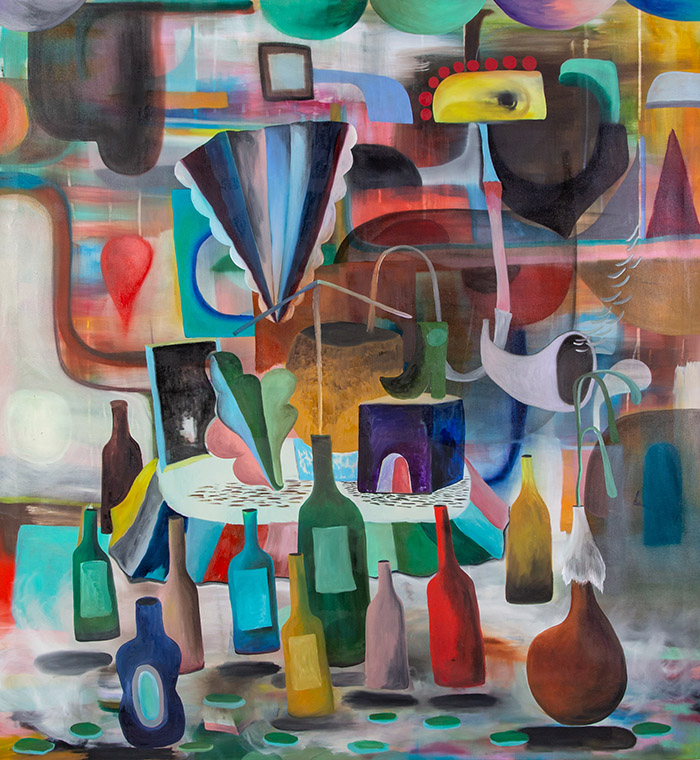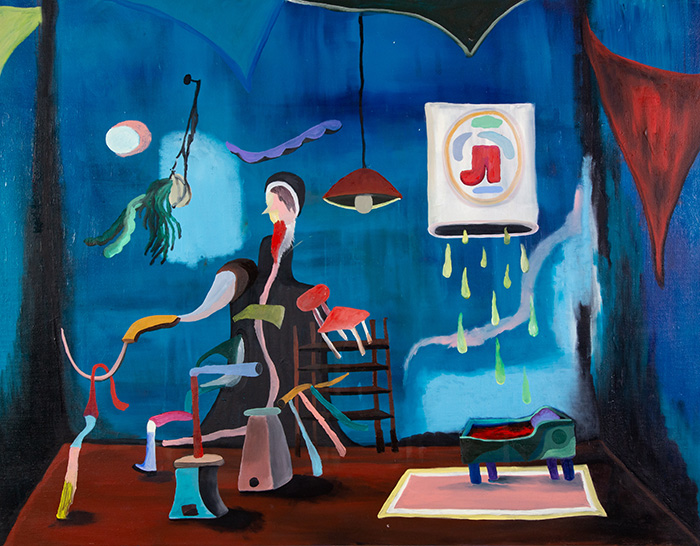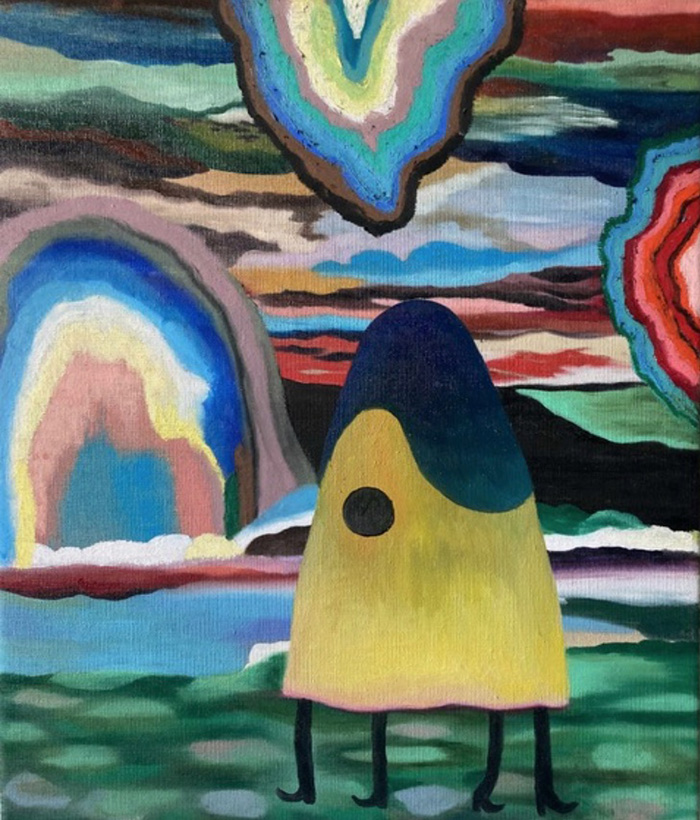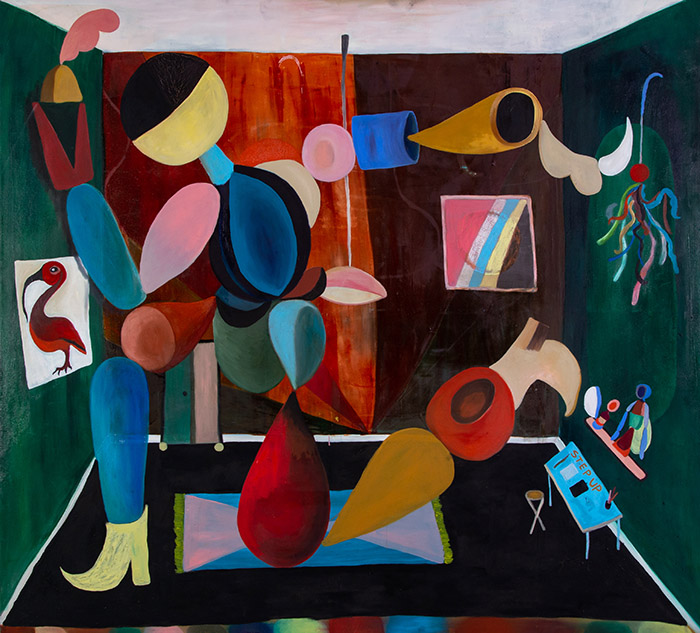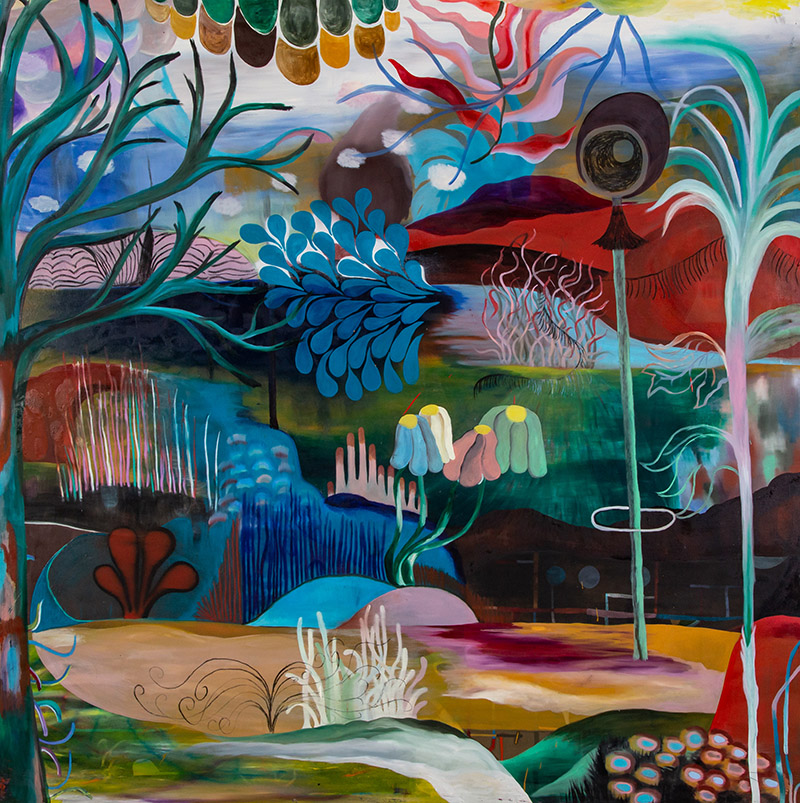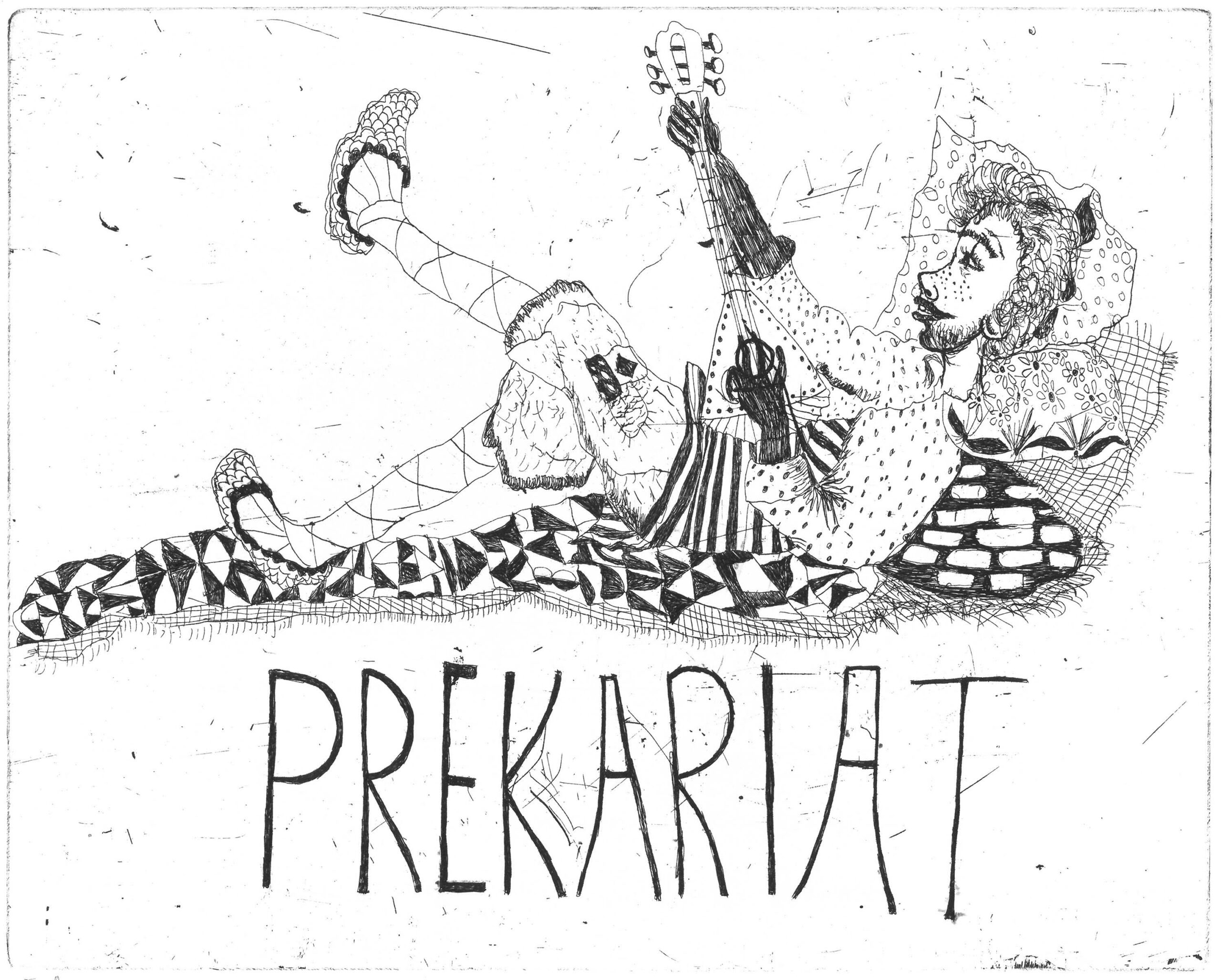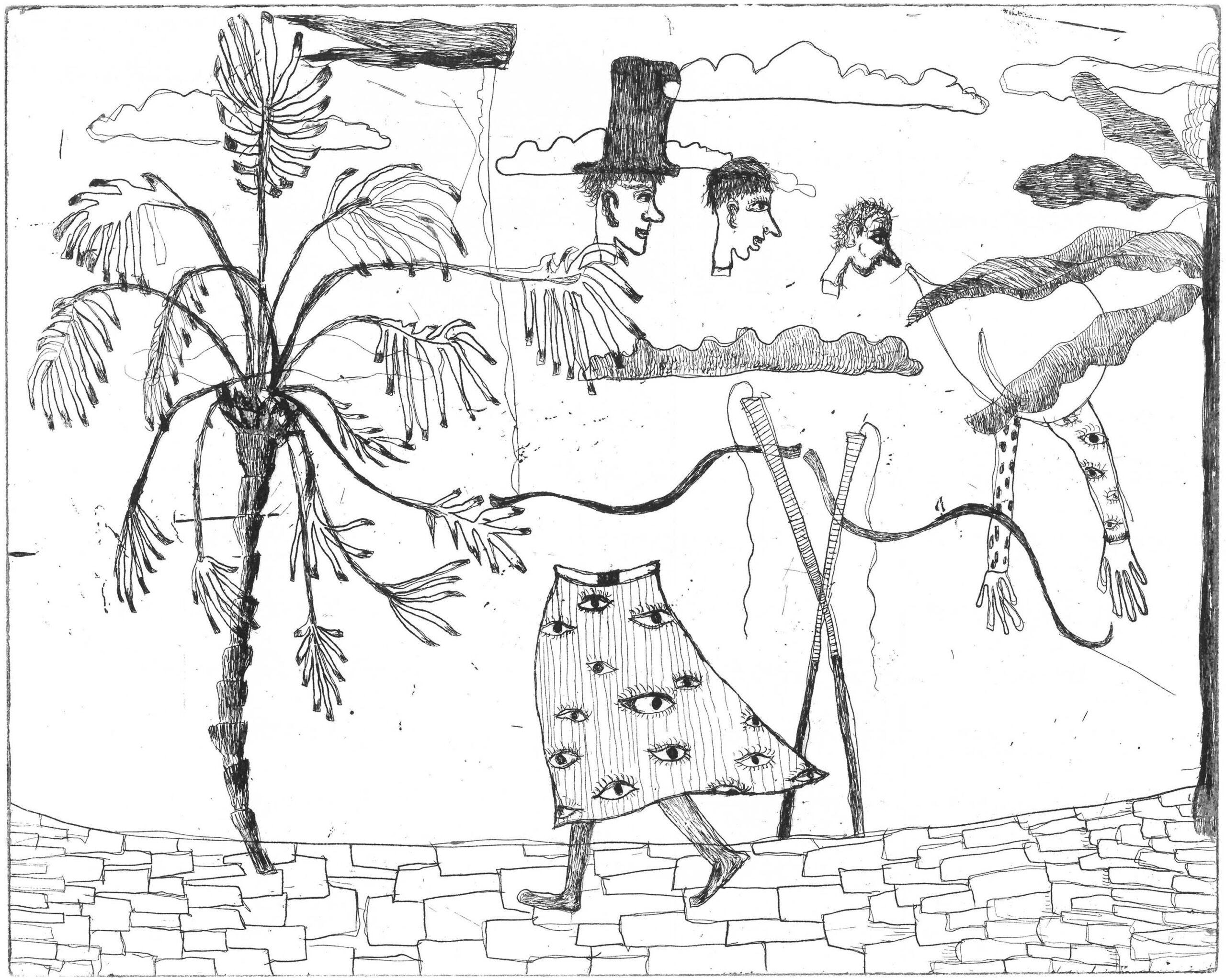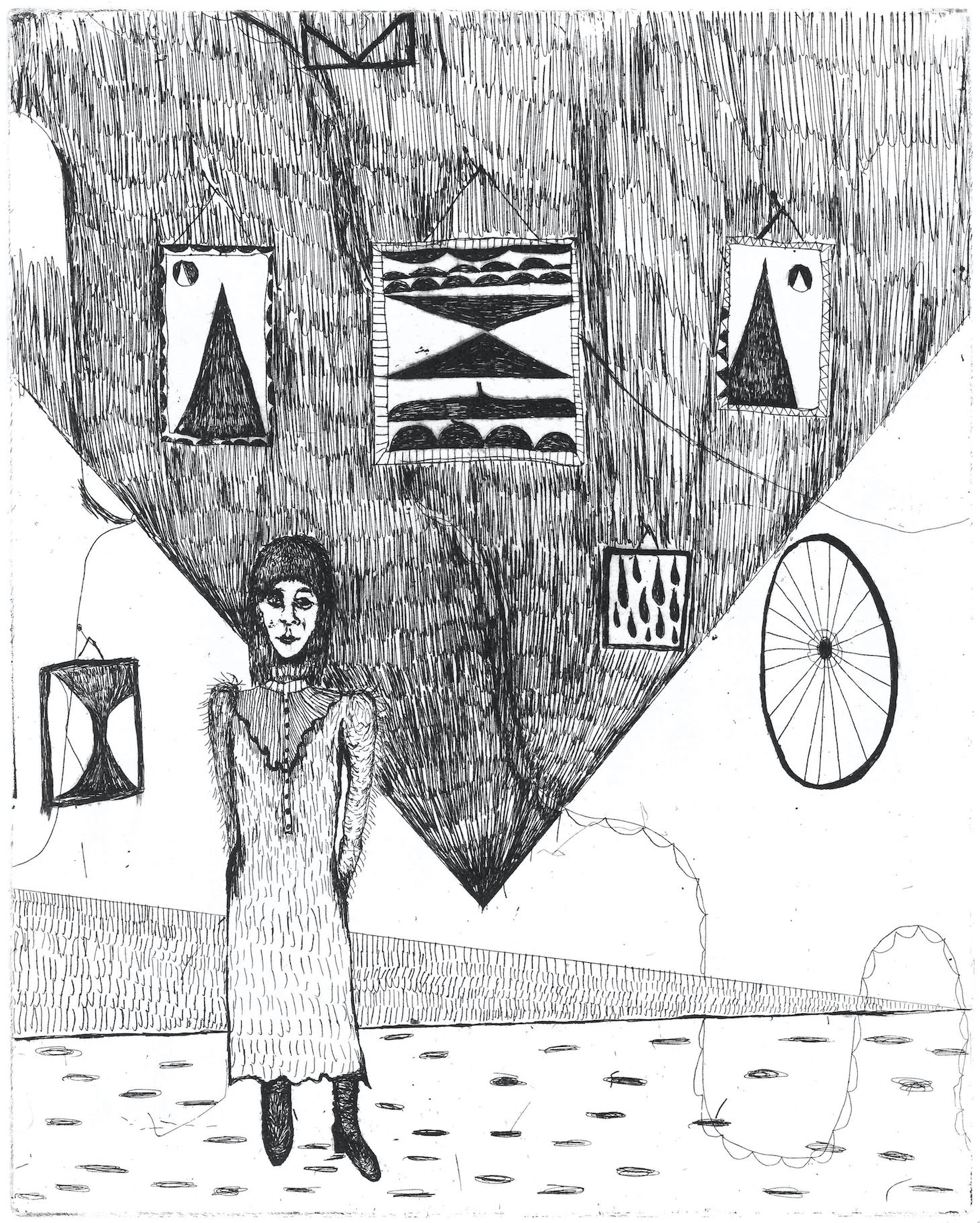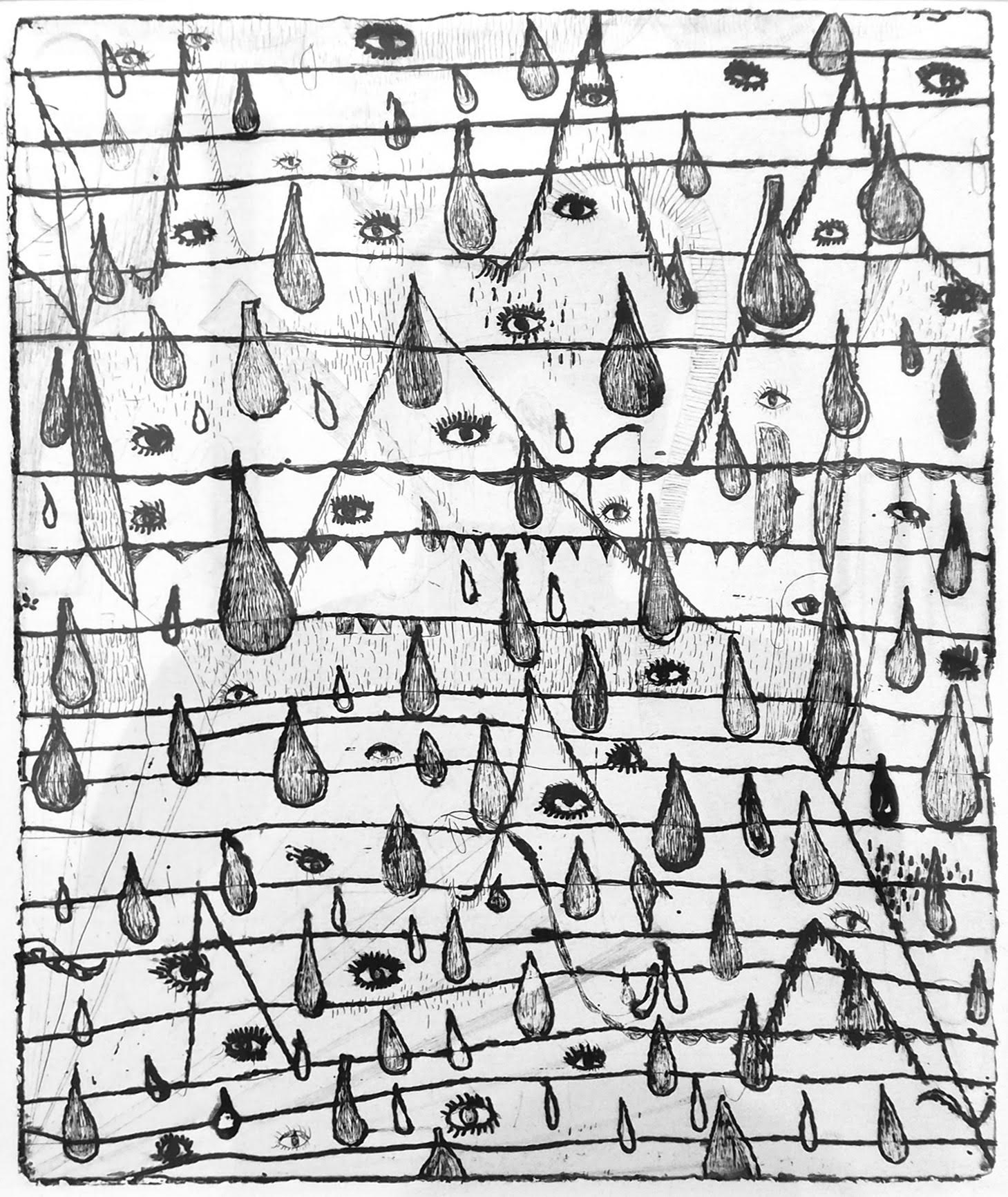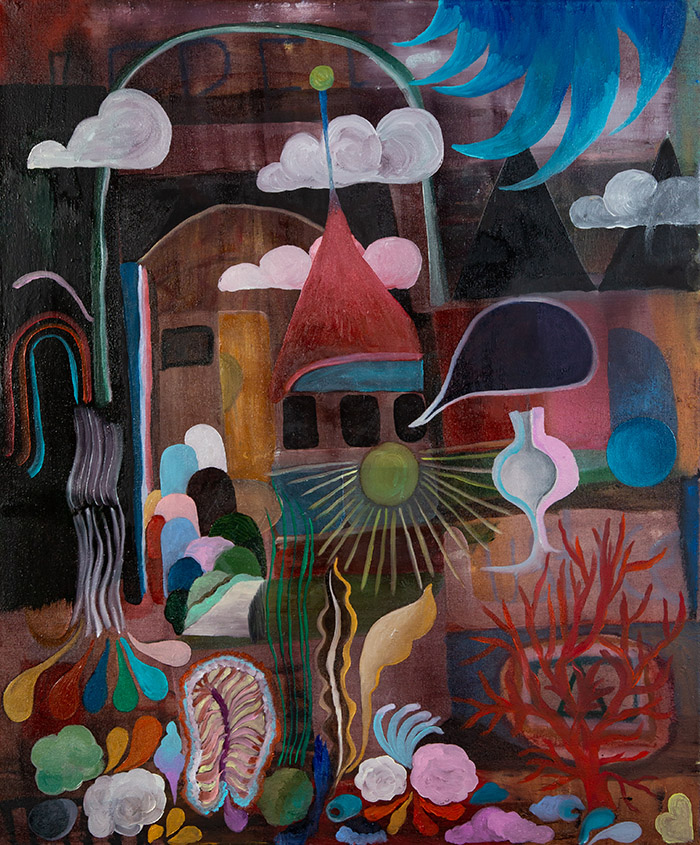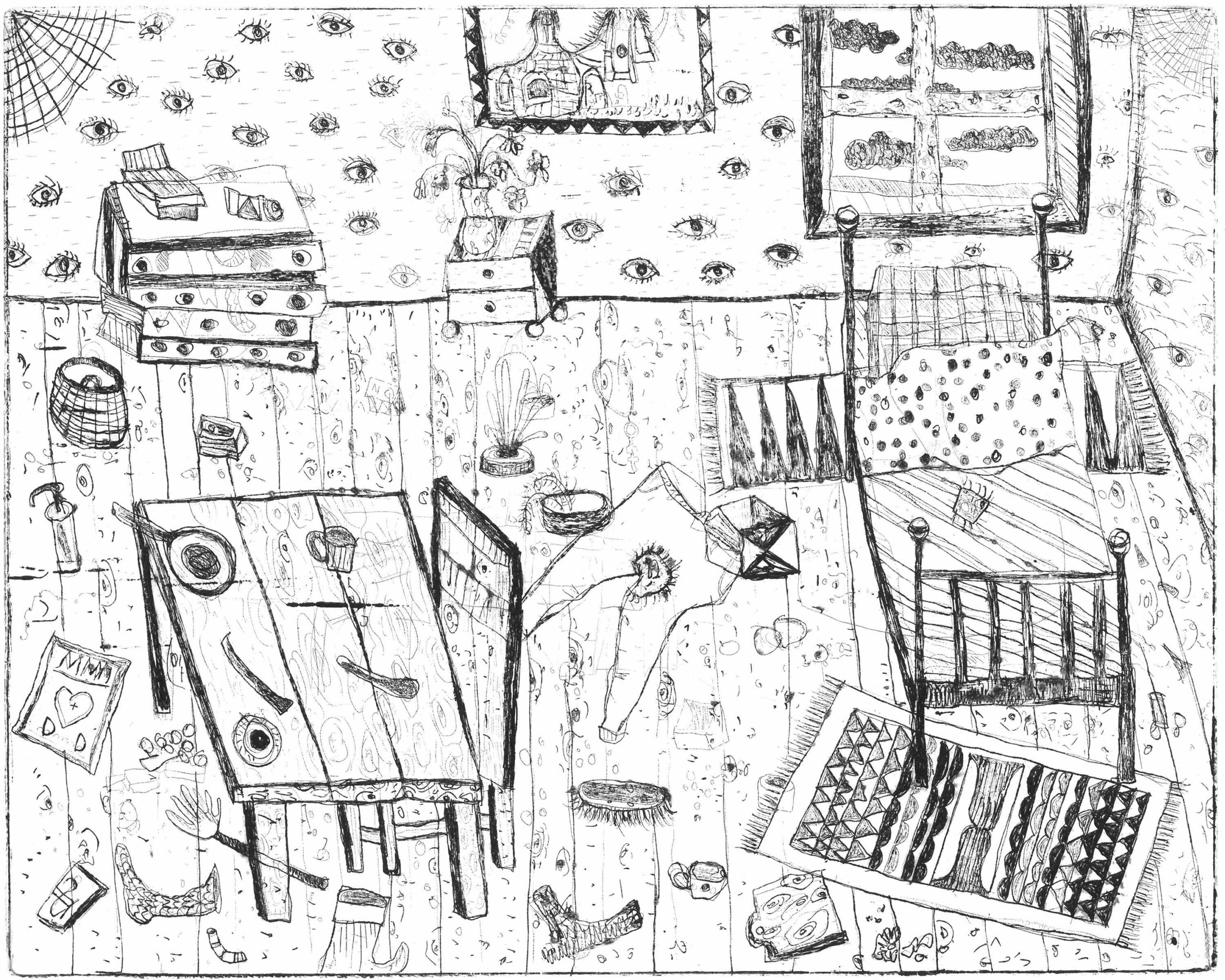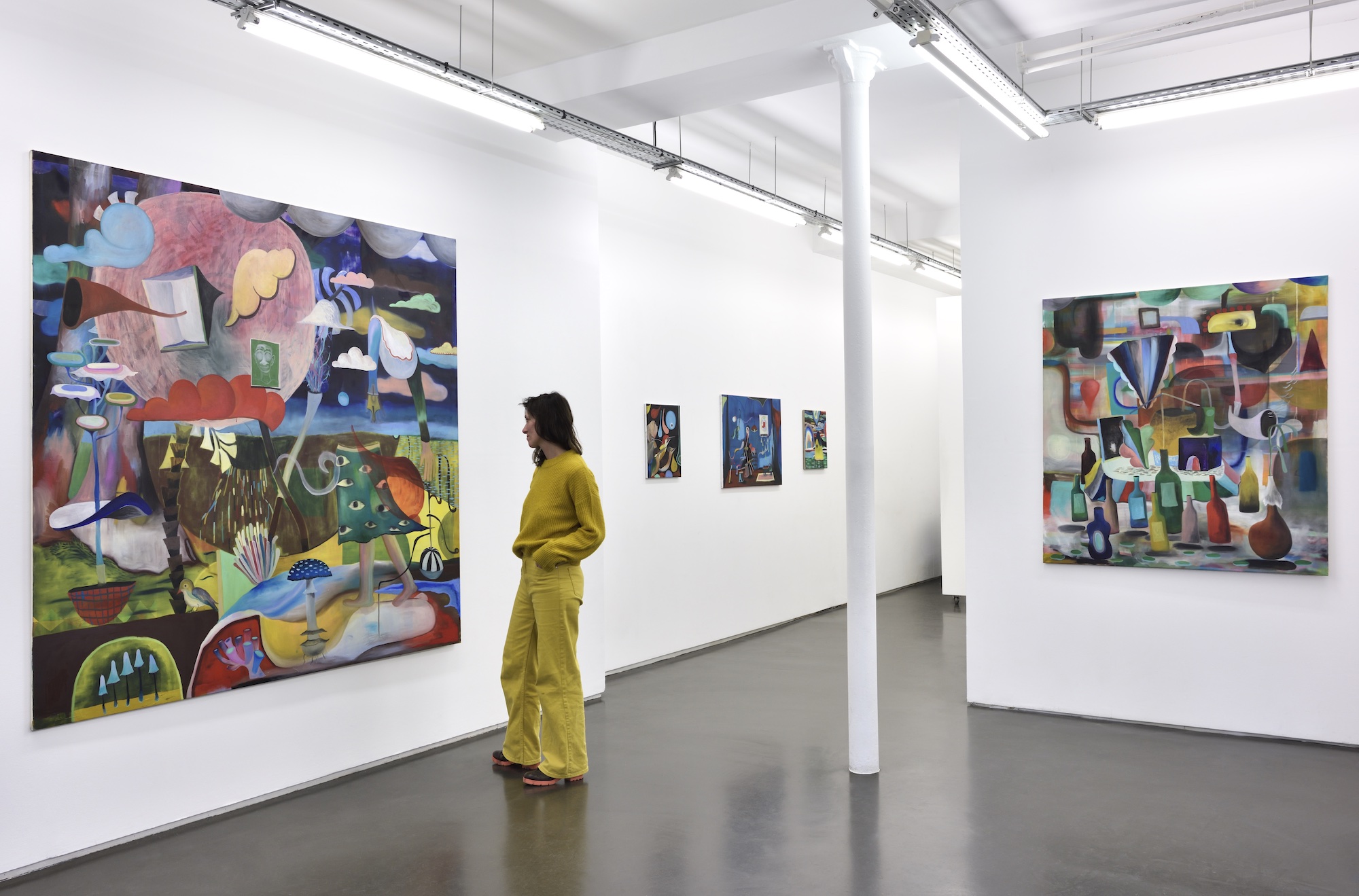
Vue d’exposition Galerie Maïa Muller – Copyright Rebecca Fanuele
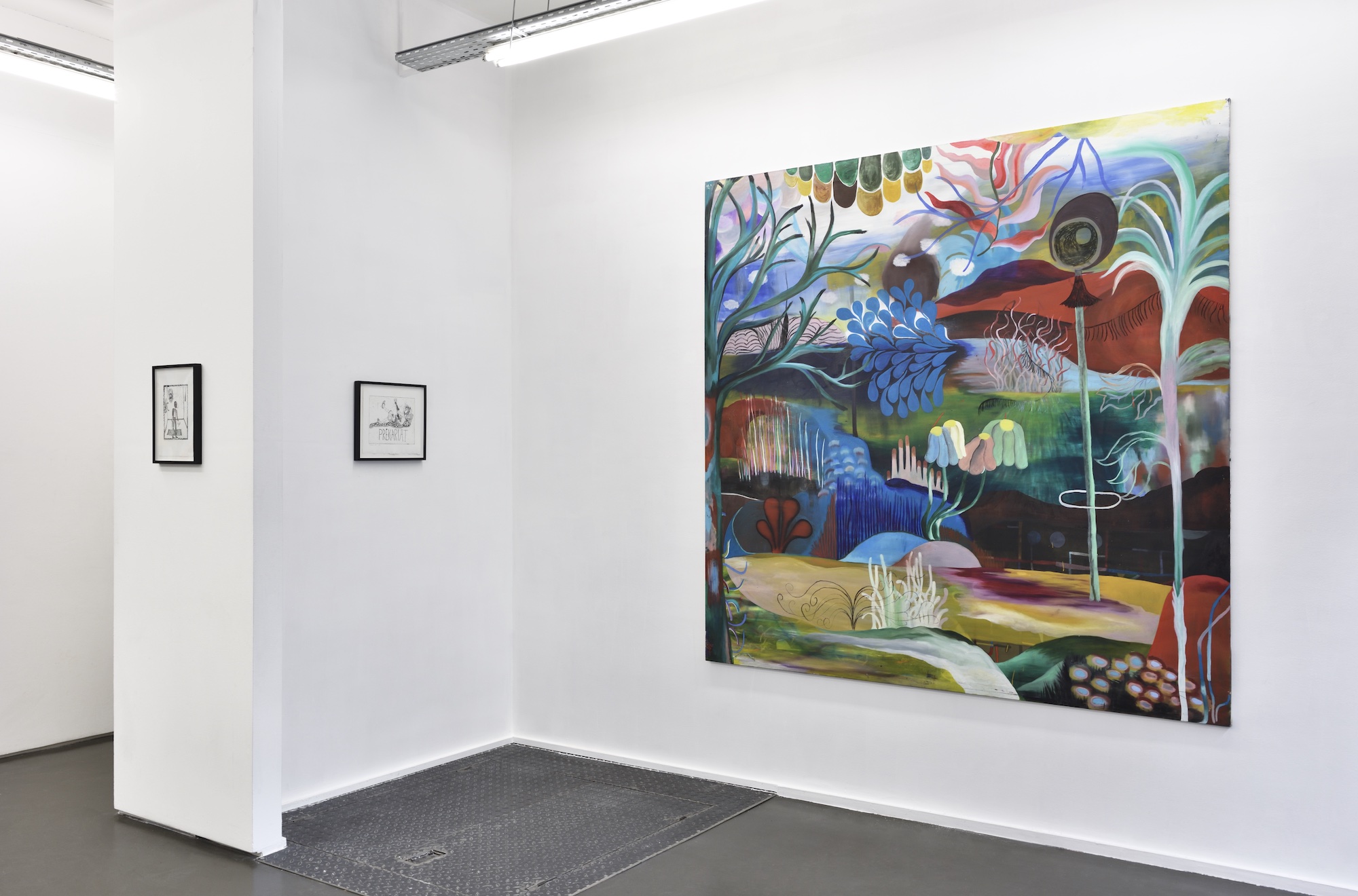
Vue d’exposition Galerie Maïa Muller – Copyright Rebecca Fanuele
“Domination, domestication et amour sont profondément enchevêtrés. Le foyer est le lieu où les dépendances au sein des espèces et entre elles sont les plus étouffantes. Malgré tout le plaisir qu’un foyer procure, ce n’est peut-être pas le meilleur espace sur Terre pour la vie multi-espèces. Considérez plutôt la généreuse diversité des bordures de route.”
Anna L. Tsing – Proliférations (Wildproject, 2022)
Anna L. Tsing – Proliférations (Wildproject, 2022)
Monika Michalko construit une peinture magique et intuitive. Elle débute rarement à partir d’un support vierge. Le plus souvent, par nécessité, elle recouvre des peintures existantes pour en ressentir les abysses. Elle travaille dans l’épaisseur, non seulement de ses propres images, mais aussi de sa mémoire, son imaginaire, ses errances et ses fantasmes. À l’intérieur de ce vortex illimité, elle puise des motifs au creux de rêves, de pensées poétiques ou d’éléments réels. Monika Michalko plonge à l’intérieur de ce que le philosophe Paul B. Preciado nomme la somathèque. Il précise : “Le corps, c’est une somathèque : un ensemble de représentations, de rituels, de techniques, de normes de théâtralisation.” (2020) En biologie la somathèque signifie littéralement l’enveloppe de cellules. Elle est le lieu de stockage des données d’une histoire faite de généalogies, d’émotions, de souvenirs, de secrets et de silences. L’artiste explore ainsi ce qui la constitue au passé, au présent, comme au futur en peignant des scènes flottantes au cœur desquelles des objets du quotidien (bouteilles, chaussures, vases, lampes, etc.) et des êtres vivants (humains et plus qu’humains) agissent, résonnent et cohabitent.
Monika Michalko plonge en elle-même pour en extraire des fragments, des éléments de situations qui ne proposent aucune narration, des corps fantomatiques, des couleurs franches et en demi-teinte, des lumières éclatantes et des ombres caverneuses. Les peintures nous invitent alors à plonger à notre tour dans cette vie cryptée dont certains indices s’entrechoquent nécessairement avec la nôtre. Depuis son enfance, Monika Michalko manipule des images. Celles de son frère photographe, mais aussi toutes sortes d’images récoltées. À partir des images existantes, elle développe une pensée du collage où les formes, les couleurs, les lumières et les motifs s’articulent les un.es aux autres. Une pratique qu’elle poursuit à l’école d’art de Hambourg et qui ne quitte pas son travail actuel. L’artiste dit travailler “en réaction puisqu’une image en amène une autre”. De cette pensée rhizomatique et émotionnelle de l’assemblage jaillit la part merveilleuse et mystérieuse de son univers plastique.
Il est communément dit que la nature a horreur du vide. Monika Michalko en prend acte. Elle multiplie les motifs qu’elle organise dans un espace faussement chaotique. Des formes liquides circulent dans et entre les peintures. Des fluides colorés et lumineux qui instillent des mouvements, qui impulsent des circulations de regards et qui allient les différents motifs présents au sein de chaque peinture. Ces formes physiologiques intensifient la dimension vivante qui nourrit et anime l’ensemble de son œuvre. Monika Michalko intègre en effet un vivant proliférant : arbres, racines, oiseaux, racines et plus récemment des coraux et autres végétaux sous-marins. Pourtant, les éléments vivants et organiques s’allient à des composants architecturaux. L’artiste structure les compositions en fabriquant des échos, des des abris à l’intérieur du territoire de la peinture : des cachettes, des espaces indéfinis formés de lumière et de couleur. C’est peut-être la question de l’habitat, au sens le plus généreux de son acceptation, qui traverse l’œuvre de Monika Michalko. Celle-ci représente de manière alternée et/ou combinée des espaces intérieurs et des paysages mentaux où le motif de l’habitat y est récurrent (maisons, châteaux, tentes, cabanes). Dans la maison, dans l’atelier ou en dehors, nous observons aussi la présence de motifs architecturaux stylisés : des portes, des fenêtres, des escaliers. Autant de motifs qui génèrent de profondes échappées vers d’autres dimensions oubliées, possibles et en devenir.
Julie CRENN



